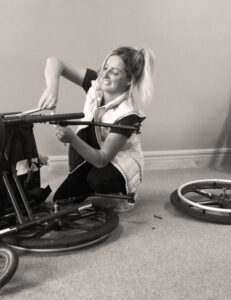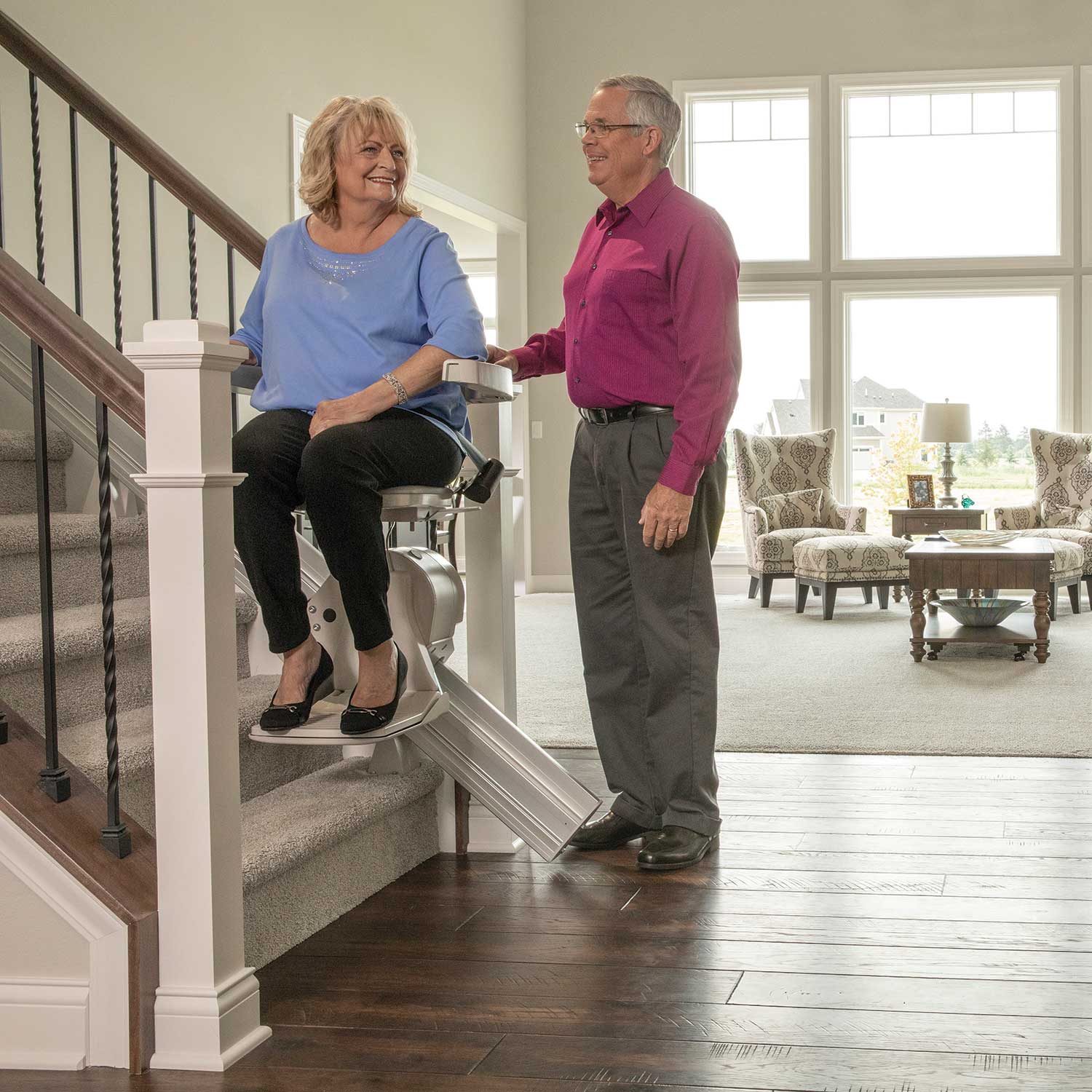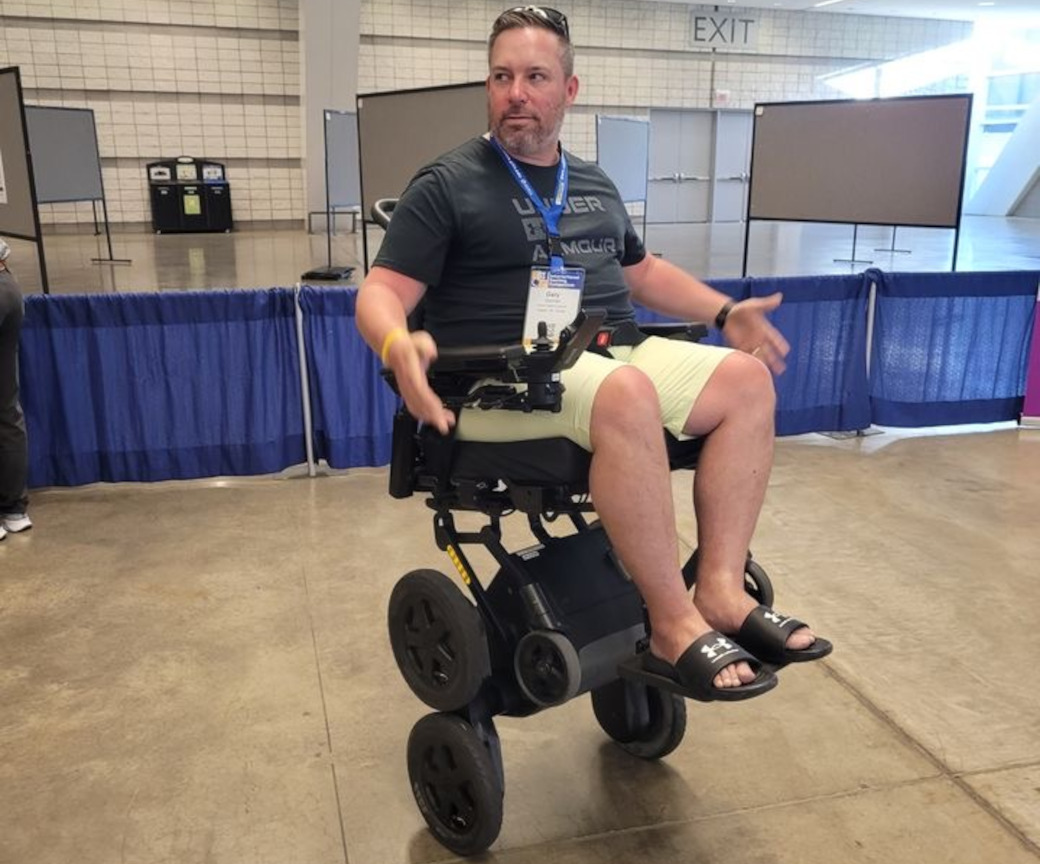As we grow older or face mobility challenges, the simple act of moving from one…

If it doesn’t fit, you can’t sit!
Sliding out of a wheelchair is a common problem faced by wheelchair users with a reduced ability to reposition themselves throughout the day. Depending on various factors such as their current mobility device and seating system or their living environment (long term care vs. home) there are several seating strategies we can take to reduce the probability of sliding while still maintaining their functional abilities. Prior to making any changes to their seating system and mobility device, a full assessment is required to identify the seating goals and what options are available with their current system.

Seating Changes
None for a seat belt (2 or 4 point padded is the most common). If the manual wheelchair user is in a long term care setting it may not be possible to use this as there are restraint free policies in place. What this typically means is if the client is unable to remove the seatbelt independently they are unable to have a belt on their chair. If this is the case we can suggest changes to the cushion and backrest. There are some cushions on the market that are contoured or have an anti-thrust shape. This type of cushion is lower in height at the rear of the cushion with a slope to prevent the client from sliding forward. A second option that can be added is a foam wedge to the bottom of their current cushion. The foam wedges can come in various heights (1”, 1.5” etc.), depending on what is required. Secondly the backrest can be changed to provide a rigid support to help prevent the pelvis from rolling in posterior pelvic tilt. Additionally a lumbar support can be added to the rigid backrest to help keep the back and spine in an ideal alignment.
Adjustments to the Mobility Device
Many of the manual wheelchairs currently available and most that are funded through the AADL program can be adjusted in their configuration to help prevent the individual from sliding in their wheelchair. One of the first adjustments that can be done is to “dump” the manual wheelchair which means the front of the wheelchair is higher than the rear, putting the individual in a fixed tilt position. In most Category A wheelchairs on the AADL program (Ki Mobility Catalyst 4C, Sunrise Medical Breezy 600 etc.) the maximum amount of dump that can be done is a 2” difference between the front and rear seat to floor height. To achieve the dump required a parts change may be required to replace the rear wheels, casters, forks or a combination of all. When changing the dump there are some factors to consider. First the caster journal angle needs to be adjusted for that it is at a 90 degree angle (perpendicular to the floor). This ensures the wheels are performing optimally and the rolling resistance is reduced. By dumping the chair the client’s function needs to be assessed to ensure that it isn’t compromised (eating/swallowing, vision etc.) and additional adjustments may be required to ensure the client is sitting as upright as possible. This can be done by adjusting the back angle of the wheelchair or if they have an adjustable tension back upholstery on their chair, the tension of the straps can be adjusted to provide adequate support at the PSIS (posterior superior iliac spine) and the pelvis so it does not roll into a posterior pelvic tilt.

It is recommended when considering any of these or other changes to their seating system that an OT and Seating and Mobility Specialist are consulted to ensure appropriate changes are made. Some common requests we hear which are not appropriate to address sliding in the wheelchair are adding a pommel to their wheelchair, especially with pediatric clients. The function of a pommel is to reduce the client’s legs from coming together or scissoring; not to prevent sliding.
If some of these adjustments do not solve the problem then a new mobility device may be required that allows the client to be tilted up to 50 degrees. This utilizes gravity to not only prevent sliding but it also makes it easier to reposition the client in their wheelchair if they are sliding forward. We practice a standard of excellence when dealing with solutions for clients every shape and size. We are here to help and provide education for all the questions you may have regarding your health supply needs.



